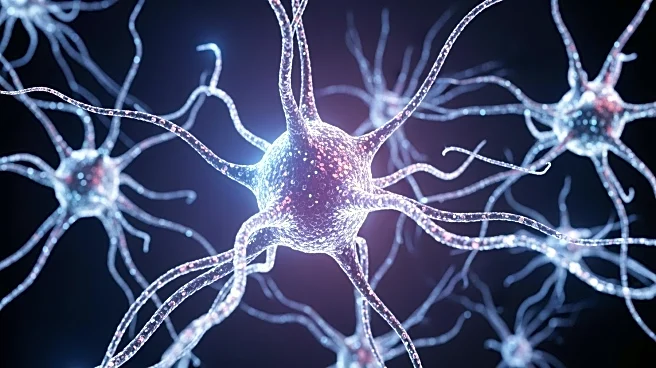What's Happening?
A team of researchers at the University of Science and Technology of China has unveiled a new mechanism for synaptic vesicle exocytosis, termed 'kiss-shrink-run,' through a study published in Science.
This discovery reconciles the long-standing debate between 'kiss-and-run' and 'full collapse' models of neurotransmitter release. Using a time-resolved cryo-electron tomography platform, the researchers captured millisecond-scale imaging of synaptic vesicles, revealing a hybrid process involving a critical shrinking phase. This mechanism provides a clearer understanding of synaptic transmission, which is essential for neuronal communication and brain function.
Why It's Important?
The discovery of the 'kiss-shrink-run' mechanism is significant for neuroscience, as it offers a deeper understanding of synaptic transmission, which underpins learning, memory, and neurodegenerative diseases. This insight could lead to new therapeutic approaches for brain disorders and enhance our comprehension of brain function. The cryo-ET technique sets a new standard for analyzing membrane dynamics and molecular interactions, potentially influencing future research methodologies and technological advancements in neuroscience.
What's Next?
The 'kiss-shrink-run' mechanism opens new avenues for studying synaptic plasticity and brain disorders, potentially leading to innovative treatments and interventions. Researchers may further explore the implications of this mechanism on neuronal communication and its role in various neurological conditions. The cryo-ET technique could be applied to other areas of cellular biology, advancing our understanding of complex biological processes and interactions.
Beyond the Headlines
The revelation of the 'kiss-shrink-run' mechanism highlights the importance of interdisciplinary research and technological innovation in advancing scientific knowledge. The study's findings may prompt ethical discussions regarding the application of advanced imaging techniques and their impact on research practices. Additionally, the mechanism's implications for brain function and disorders could influence public health policies and funding priorities, emphasizing the need for continued investment in neuroscience research.











